Newsletter
Current
Previous
|
December 2023
|
|
|
|
|
On the wider scale, the wonders of the natural world have been presented in all their glory on the BBC’s latest series of Planet Earth, and the year has come towards its conclusion with the annual get-together of the world’s environmental leaders at COP ’28. And we too, in our small way, have been active on the local scene, as these pages hope to show. We’ve enjoyed the outdoors with our walks and at the Green Fair – OK, perhaps that was rather too wet to really enjoy – and seen Maiden Erlegh Nature Reserve through the camera lens on a guided photography morning. The results might find their way onto the next Nature in Earley calendar, the 2024 edition of which has now sold out. And our talks have been inspiring too, with Lucy Jones pulling in the crowds to hear “why our minds need the wild” and Rosie Street explaining our county’s nature recovery strategy. Read on…
Edwin A.R. Trout
|
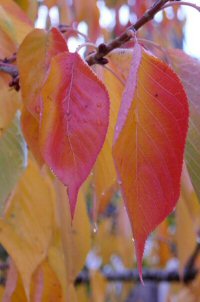
|
Autumn Leaves

Photo: Edwin Trout
|
|
A change in the weather
Climate change was described at COP28 as “a cacophony of broken records” and locally we have experienced some exceptional weather of our own. The night of 15/16th October was the coldest October night in Reading since 1999, for example, but there have been others. As you’ll see on page 2, The University of Reading is welcome a neighbouring weather institution to its campus …
|
|
Committee News
Announcements from the AGM and latest committee meeting.
Annual General Meeting 2024
The EEG’s 2024 AGM will be held at Maiden Place on Tuesday 23rd January at 7.30pm. We would welcome shortish presentations from members on appropriate topics of interest, so if you have anything that you would like to put forward please let Stewart Macleod (Hon Sec) or Bob Collis (Chair) know.
Grant by Earley Town Council
We are delighted to acknowledge the generous award of a grant by Earley Town Council to cover the cost of printing the three issues of the EEG Newsletter in 2024.
Green Fair 2023
It was a particularly wet day, and we were invited to pack up early, but we had plenty of visitors to the EEG stand in the meantime, including the Mayor of Earley. Visitors seemed interested in our proposals for green corridors and keen to buy the calendars we had on sale. (We sold over 50.) And we added some new names to our membership.
Local Climate Academy
Wokingham Borough Council is among the local authorities that have welcomed training offered by Climate Emergency UK, the organization behind Council Climate Scorecards. CEUK’s Local Climate Academy provides online training for councilors and officers to improve climate strategies and action.
[Wokingham Today, 7 Sept]
|
The EEG’s 2024 Calendar: record sales
A big ‘Thank You’ to the 24 local photographers who submitted photographs for the EEG’s 2024 calendar. We managed to squeeze 43 of their images into the calendar – the most so far – to produce yet another set of lovely pages showing Earley’s wildlife and natural habitats. This year, we’ve sold a record number of calendars at just under 250, and have now sold out. An exhibition of some of our photographer’s work is planned to be held at St Nicolas Church for the spring, so look out for information about the exhibition in the new year.
 A big ‘Thank You’ must also go to the organisations that have sold calendars on our behalf. They have done an excellent job, and, in some cases, have asked for more to sell! We are indebted to: Earley Town Council’s Helpshop, The Crescent Centre, The Huntley and Palmer Allotment Association, St Nicolas Church, Trinity Church Choir, Our Lady of Peace Social Club and the East Reading Horticultural Society.
A big ‘Thank You’ must also go to the organisations that have sold calendars on our behalf. They have done an excellent job, and, in some cases, have asked for more to sell! We are indebted to: Earley Town Council’s Helpshop, The Crescent Centre, The Huntley and Palmer Allotment Association, St Nicolas Church, Trinity Church Choir, Our Lady of Peace Social Club and the East Reading Horticultural Society.
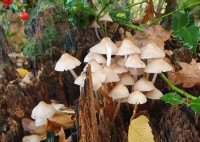 We have also sold calendars at the EEG’s events, including the talks by Rosie Street and Lucie Jones, and at Leslie Hawker’s Macmillan Coffee Morning and Earley Town Council’s Green Fair. A substantial number have also been sold as a result of direct enquiries and member contacts.
We have also sold calendars at the EEG’s events, including the talks by Rosie Street and Lucie Jones, and at Leslie Hawker’s Macmillan Coffee Morning and Earley Town Council’s Green Fair. A substantial number have also been sold as a result of direct enquiries and member contacts.
Another big ‘Thank You’ must go to Bob Collins who has joined me in taking on the ‘sales role’, adding more outlets and personal energy to making the calendar a success. Sorry about any confusion caused by our similar names, but hopefully we’ll all become used to it! The community has once again come together to raise funds in support of the Earley Environmental Group’s work. Thank you all.
Bob Collis, Calendar Editor
Photos from the 2024 calendar: above left - Fungi, Harris Gardens by Steve Prior (October) and top right - Pyramidal Orchid by Rod MacFadyen (June)
Weather forecasting centre
Plans go in for new weather forecast centre in Reading
A planning application for a new headquarters for the European Centre for Medium-Range Weather Forecasts has been submitted to Wokingham Borough Council by the Government Property Agency. If approved, it would become the largest cluster of weather and climate research and operational forecasting facilities in the world, alongside the university’s Department of Meteorology. Project manager Mace is currently working on the scheme under a £4m pre-construction services agreement.
[Construction Enquirer, 1 Nov 2023]
|
|
|
|
Nature Recovery
An update on Berkshire’s Nature Recovery Strategy as presented to the Group in October.
LNRS Structure & Timeline
Where are we?
The governance structure is being put in place
The base map is ready
The engagement strategy is being planned
Structure
A Steering Group has been established with representatives of BBWOT, Natural England, Environment Agency and Forestry Commission, the National Farmers’ Union, the University of Reading and the local authorities, including the environmental officers (Duncan Fisher of WBC). A Stakeholder Engagement Working Group has also been formed, which includes EEG Chair Bob Collis and is looking to engage a professional facilitator, and a Mapping Working Group – including the Thames Valley Environmental Records Centre and borough representatives – had started work. In future there will be a farmers’ and landowners’ group too, and a group to set priorities.
Timeline
January 2024
- Initial consultation period, for a broad sweep.
Spring 2024
- Targetted follow-up consultation
Summer 2024
- Prioritising the conclusions arising from the consultation and habitat maps
Autumn 2024
- LNRS published
|
Berkshire’s LNRS
A talk by Rosie Street, Strategy Manager, on 10th October
Rosie, Strategy Manager for Berkshire’s Local Nature Recovery Strategy (LNRS), described this latest initiative in which the county’s six unitary authorities have come together to produce a Berkshire-wide strategy under the leadership of the Royal Borough of Windsor & Maidenhead.
What are Local Nature Recovery Strategies?
With biodiversity in serious decline, the Lawton Report of 2010 made recommendations that were summarily described as “more, bigger, better and joined” – the latter being the most exciting element. Since then a 25-year Environment Improvement Plan has been developed and the Environment Act passed, the latter introducing a statutory biodiversity duty for local authorities. From this a Nature Recovery Network throughout England is envisaged, with each of 48 divisions (usually counties) with its own plan, but collectively joined up and interactive. These plans will be new, locally led (“bottom up”), transparent and collaborative.
Each plan will have two components:
- A statement of biodiversity priorities, which will describe opportunities and explain ‘how’ they will be achieved, including measures by which to indicate progress.
- A local habitat map – the format yet to be agreed, but expected to be an interactive layer over a base map.
Five pilot schemes have been launched so far, the most promising being Cornwall. Rosie showed an ‘opportunity’ map from this preliminary work, consisting of statutorily protected areas in yellow, existing green space in purple, and opportunity space in green.
TVERC has already plotted Berkshire’s purple areas for the local LNRS, making use of records supplied by local contributors, and a roadmap is currently being prepared for publication in 12-18 months’ time.
How is the Strategy to be realised?
The LNRS just plans the direction; other measures are required to implement it and these are now in prospect, or even in place:
- Biodiversity Net Gain – a requirement for developers to improve biodiversity by 10%.
- Environmental Land Management Grants – to achieve environmental uplift in defined areas.
- Carbon offsetting – the LNRS provides direction for firms’ carbon offsetting schemes.
- Statutory duty for local authorities – Defra is to issue guidance on planning policy.
What will LNRS deliver?
Improved biodiversity, and ecosystem services that will benefit humans as well as wildlife: improvements to air and water quality and the management of flood risk.
Opportunities for EEG
The EEG has met with Rosie to discuss our proposals for an Earley Green Corridor Network and that this has been well received with a view to possibly taking the concept forward as part of the strategy development process.
|
|
EEG Talks
Reports of talks given at recent EEG meetings, starting with guest speaker, Lucy Jones.
Lucy Jones
Lucy was introduced as a journalist and independent researcher in the fields of science, culture and ecology, whose work has appeared in the Sunday Times, Guardian and New Statesman. The first of her four books was written when she lived in London – before moving to Basingstoke seven years ago –and was about why the fox is both loved and loathed. Her latest book, the subject of the evening’s talk, has been described as “Beautifully written … meticulously researched”, and by Isabella Tree as: “An elegy to the healing power of nature”.

Copies this and Lucy’s earlier books were on sale at the meeting and signed by the author on request.
Humans are particularly sensitive to geosmyn, being able to detect tiny quantities, and inhaling it provokes reactions in the brain.
Then our eyes are caught by the shapes we see in plants around us. (In Lucy’s case, she notices the many wall plants growing in the urban environment of Basingstoke.) We can easily become fascinated by these shapes and Lucy wondered why they can be so appealing. The answer is because they are fractals – self-repeating shapes, but on an infinitely variable scale. We can see such patterns in ferns, shells and waves. Richard Taylor in Oregon has researched the appeal of shapes, comparing their appearance in nature and art (eg the work of Jackson Pollack). He has found a “physiological resonance”, by which certain shapes are particularly suited to the human retina.
Nature can fill us with a sense of awe. Contact with nature is often seen as a privilege of affluence, but actually, Lucy contended, it is a birthright. It is not just the dramatic experiences – the Grand Canyon, or white water rafting – that can inspire us. She showed images of universally accessible phenomena such as [macro] clouds and [micro] slime moulds. That the sense of awe and wonder feels nice is a given, but it is also good for our health. Dasher Keltner (California) has found that the experience of awe reduces cytokines (which generate depression) and reduces the ‘defant mode network’ (which affects our sense of self centredness), and makes us disposed to be kinder, more bonded and generous.
E.O. Wilson (1929-2021), the American evolutionary biologist whom Lucy interviewed before he died, was optimistic. He talked about “biophilia”, an innate affiliation with nature.
|
Losing Eden
A talk by Lucy Jones, 14 November 2023
In her 20s, Lucy explained, she had been a music journalist, working at the Telegraph and NME, and nature was not ‘on her radar’. About 12 years ago she suffered a health crisis and depression. She was offered medication, psychiatry, the support of family and friends, but there was also a fourth strand to her recovery. She took to running in Walthamstowe Marshes for the beneficial effect of endorphins, but found herself slowing down and admiring the natural surroundings. She’d return to her flat feeling better, “scoured” as she put it. This was a surprise; no one had suggested the restorative power of nature, but the effects were profound. She started to research what was happening and fell into a new field of study: how contact with nature is essential for health and well-being.
Responding to a striking photograph on screen of the Yellow Staghorn fungus she’d taken in some woods close to her home, Lucy explained she was going to (metaphorically) take her audience on an autumn walk in an imaginary woodland. She invited us to step off the road, in among the beech and sweet chestnut, and immediately we’d notice it was quieter, calmer. Our attention would be taken by the sound of wind in the trees and the rustling of leaves. It could be in other settings, by the sea for instance, but what would be happening is that our parasympathetic nervous system is activated, enhancing our experience of contentment, of rest, digestion and similar peaceful reactions. We have a sympathetic nervous system too, that governs our fight or flight reactions, responding to stress, and we need a balance between the two – but preferably one that favours the parasympathetic. Such a balance helps us recover from stress. Even when a patient is under anaesthetic, the sound of recorded birdsong has been found to quell stress markers in the mind.
Bending to look at moss on the ground, we’d come into closer contact with the soil beneath our feet. Having moved to Basingstoke, Lucy had a garden for the first time and found time spent in it inherently pleasurable. Indeed, her infant daughter was even drawn to trying to eat the soil itself. Looking into the science behind this Lucy found there is a soil bacterium known as Mycobacterium vaccae, which has an anti-depressant effect on humans, and has been found to give a buzz that can last for up to a week. It is now being used in treatments for PTSD. (Christopher Lowry, who has researched this interaction has found that babies around the world try to eat soil!)
Invited to look up through the treetops, we experience another phenomenon. Phytocides are chemicals emitted by trees and these have beneficial effects, which in Korea have been shown to invigorate our immune system while forest bathing.
Fungi, as we might have suspected from her choice of photographs, are Lucy’s ‘thing’. She used some of these eye-catching images to illustrate “attention restoration theory”. The Kaplans in the 1980s drew a distinction between “directed attention” (focussed and of brief duration) and “effortless attention” (when we are grabbed by something and attention follows automatically). It is often the natural world that attracts our effortless attention. We experience “soft fascination”, enjoying the relaxating sight of a running river or birds in flight.

A gentle rain starts as we continue our walk in the woods. The pattering of raindrops on the leaves sounds nice, but there is also a smell, particularly the smell of earth after rain, known as ‘petrichor’. The smell is slightly metallic and contains the compound ‘geosmin’.
Lucy turned to photographs of the forest that straddles the border between Poland and Belarus, a residue of the primeval wildwood now threatened by commercial logging but protected by activists.
John Skull (Vancouver), an ecotherapist, points out that by the age of 18, a child will have spent 12,000 hours in the classroom. It is said that fewer than one in ten children plays outdoors in wild spaces. Most live in urban settings, so, Lucy argued, we need to create more green spaces. She showed images of such a space in her own locality, a ‘reversed meadow’ created simply by the council not mowing. In the first year alone much life has returned, and yet humans have simply stepped back from intervention. Urban rewilding small pockets of land really helps health and well-being. A study in Edinburgh suggests that pedestrians walking through a park before joining a road experience more calming of brain activity than when walking to a road via another road.
Richard Mitchell argues that access to nature reduces the inequalities of health in society, something he calls ‘equigenisis’. Access to nature is being advanced by developments such as forest schools, urban farms and community gardens. These are important, but we also need more research into nature connection in children, which is sent to be calming and comforting. Many felt that sense of communion with the world during Lockdown. Lucy had been using science to explain our responses to nature, but lots of aspects of our connection remain mysterious.
She ended by saying that enjoyment of the woods is not a luxury - no permission is needed. Access to nature is abundant, sustainable and free!
Natural History Museum
New storage facilities for the Natural History Museum in Shinfield
The Science Museum (Natural History) is to build a repository in Shinfield’s science park, in which to store its reserve collection of 28 million artefacts. It is said that at 25,000m², the footprint of the proposed building will occupy roughly the area of three football pitches, and the building will contain cutting edge laboratories and work space for scientists as well as purpose-built storage. It has been designed by Fielden Clegg Bradley Studios, and Mace has been chosen to deliver the £90m project.
|
|
Walks
Exploring the locality with the report of an EEG walk and Ray’s findings from around the reserve.
Walking Through Earley’s Local Nature and History
The EEG’s 2023 programme of ‘nature and history walks’ continued in November with a walk around the southern area of Lower Earley. Organised by Charlotte Allchin, the EEG’s Events Co-ordinator, these walks have proved to be popular both with existing members and newcomers to the EEG. The walks have been developed as part of a forthcoming book on walks and cycle rides in and around Earley planned to be published next year and aimed at covering both the area’s natural and local histories.
Previous walks this year covered Earley Station and Highwood in April, a guided tour of the Maiden Erlegh Lake and Moor Copse in May, and two walks in June covering North Earley and a short natural history walk around the Maiden Erlegh Local Nature Reserve for youngsters and their parents.
The November walk, held on Saturday 11th, took place on a glorious autumn morning starting at Maiden Place and then exploring the woods and meadows in the south of Lower Earley, including some of our ‘old lanes’; Mill Lane, Gipsy Lane and Cutbush Lane, as well as the ‘Wood of Eagles’. Thank you to the 15 people who came along and shared the morning.
Look out for more walks in the EEG’s 2024 programme. Please join us if you can.
Bob Collis
Words & Pictures
Fungi continued
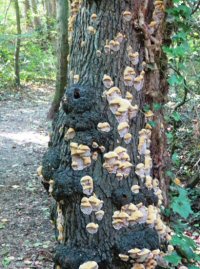
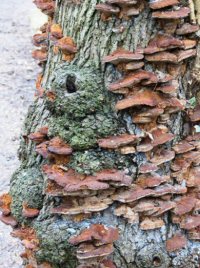

|
Fun with fungus
Ray Reedman
One of the great benefits of Grahame Hawker’s management of the Maiden Erlegh woodland is that dead wood is retained in good amounts. This wet autumn has been particularly good for fungus-hunting, by which term I do not mean foraging. Some edible fungi have deadly lookalikes and I simply wouldn’t take the risk of gathering and eating wild fungi. In any case, they look right where they are and it is only polite to leave them for the next person to enjoy. My wife Mary is particularly good at spotting them. I take pictures and we then scour our reference books and the internet in an often-frustrating quest to identify our finds. The method is crude and would make a proper mycologist cringe, but that method enables us to enjoy just one of the fascinating aspects of the world around us. The representative selection here was photographed at Maiden Erlegh in September and October.
The top row starts with a common clustered agaric (a mushroom-shaped fungus) around a stump. In the centre is one consisting of tiny pinkish balloons: a very careful look will show older blackish versions on the left. The tiny solitary bracket growing on a log is the size of a child’s fingernail. Row two has a clustered puffball species. The black one in the centre is an agaric that grew out to a dirty grey and vanished in a week. On the right is an unusual branching species.
The bottom row shows a large, low-growing bracket; then a small cup of meringue-like spores; and finally, a shapely clustered agaric. I have not labelled them, so that you can challenge yourselves. A warning, though: it is safest to work on scientific names, since many do not have common names and some found online will be American or even Australian versions.
Almost all of these are working at the break-down of wood or other plant debris. They are nature’s most efficient recycler of plant and animal matter, breaking down dead structures into reusable nutrients. There are even some that specialise in breaking down the debris of other fungus species.
A most spectacular example of their work was well illustrated in that same piece of woodland (see left). In late 2016 I recorded an eye-catching outbreak of a pale bracket fungus on a small tree by the path in the wood. The fungus appeared to be Alder Bracket, Inonotus radiatus. The tree was probably already dying and the fungus was able to dominate as it weakened. By the following spring the same brackets had aged and browned and then they faded right away. The changing shape and colour is one problem with fungus identification: a lot depends on when you find them and they often don’t match the pictures in a book. You sometimes need a mass of internet pictures to obtain a range.
After that the tree began to break up and the very wood itself crumbled. By late 2022 all that was left was this friable mess, undoubtedly helped on its way by a human fascination with the now-woolly wood fibres. The stump has since been reduced to nothing, but there is still a remnant of wood by the path. The red-brown colour of the wood is typical of alder and was not caused by the fungus.
Answers
– as proposed by the author, who would be pleased to be corrected if any reader is an expert mycologist
Line 1: Hypholoma fasciculare (Sulphur Tuft); Hypoxylon howeanum; Skiletocuis nivea
Line 2: Lycoperdon pyriforme (Stump puffball); Pluteus atromarginatus; Ramaria Stricta (Coral fungus)
Line 3: Humaria hemisphaerica; Ganoderma austral (Southern bracket); Galerina marginata (Funeral Bell)
References
Michael Jordan: Encyclopaedia of Fungi of Britain and Europe (Frances Lincoln)
Shelley Evans & Geoffrey Kirby: Pocket Nature Fungi (Dorling Kindersley)
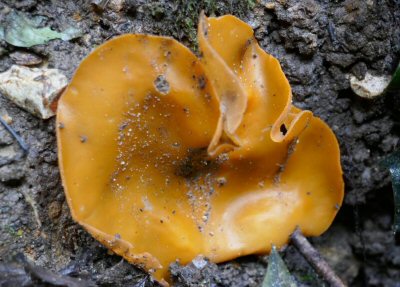
Photo:Edwin Trout
Mystery fungus - any ideas?
|
|
EEG Programme
We list the Group’s forthcoming walks and talks – and to the right, reports of practical conservation.
2024 Programme
Walks and Talks
Please see the website and public notice boards for further details and updates.
16 December
Carols at the Lake

Last year’s event. (Photo: Liz Kerry)
24 January
Annual General Meeting
See item under Committee News for more details.
Contributors
Charlotte Allchin
Bob Collis
Liz Kerry
Ray Reedman
Edwin Trout
|
Book review
“A rallying cry to protect the wild places on our doorsteps”
Alastair Humphreys is, in his own words, “an adventurer, author and motivational speaker” who has spent the past two decades undertaking expeditions abroad: cycling 46,000 miles around the world, rowing across the Atlantic, walking across India, running across the Sarah Desert and swimming across the English Channel. But recently, rather than travelling abroad, he decided to spend a year in the UK: in his own neighbourhood specifically. He committed to exploring the area covered by his local Ordnance Survey map, the sheet that included his own home. Each OS map covers a 20x20 km section of the country, subdivided by a grid of 1 km squares, and so every week he would select a random square and explore every road and path by bicycle or on foot. Within a just mile or two from home, there were places he never knew existed.
He admits to having thought it might be boring, but in the event found it very rewarding. (Sufficient indeed to merit a book!) By slowing down, he found time to notice nature in his own backyard – emerging buds in spring, migrating birds in autumn – and how it changed week by week. Armed with apps such as SEAK, he was able to easily identify so much he didn’t know. He became interested in the plants and wildlife he encountered, and the more he learned the more, the more interested he became. It was, as he has said in interview, a virtuous feedback loop.
 The author of 16 previous titles, Alastair has now written a book about his suburban exploration and the lessons he has learned. Entitled simply Local, it is described on his website as “an ode to slowing down and the meaningful experience of truly getting to know your neighbourhood” and, with greater purpose, “a rallying cry to protect the wild places on our doorsteps”. Stressing proximity, “it is a reminder for all of us that nature and wildness are closer that we think” and “that you don’t need to burn carbon travelling the world to find connection, perspective and inspiration”. Alastair urges us all to try this approach for ourselves. The author of 16 previous titles, Alastair has now written a book about his suburban exploration and the lessons he has learned. Entitled simply Local, it is described on his website as “an ode to slowing down and the meaningful experience of truly getting to know your neighbourhood” and, with greater purpose, “a rallying cry to protect the wild places on our doorsteps”. Stressing proximity, “it is a reminder for all of us that nature and wildness are closer that we think” and “that you don’t need to burn carbon travelling the world to find connection, perspective and inspiration”. Alastair urges us all to try this approach for ourselves.
Edwin Trout
Alastair Humphreys. Local (£9.99). Details: www.alastairhumphreys.com
|
|
|